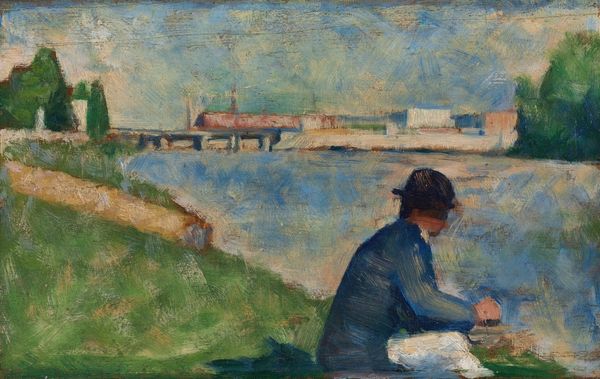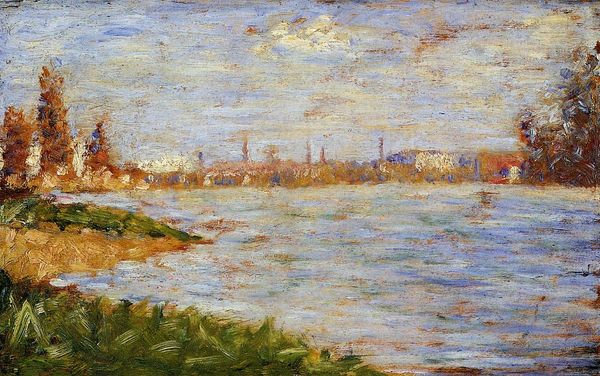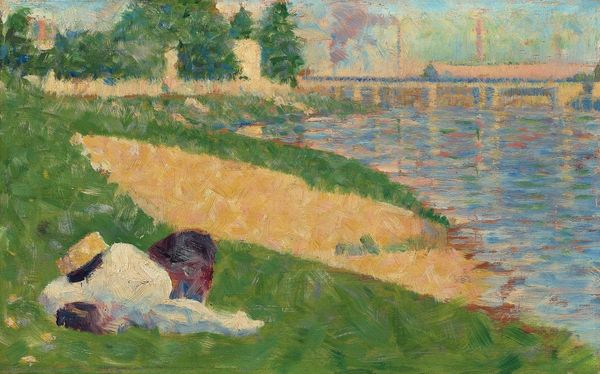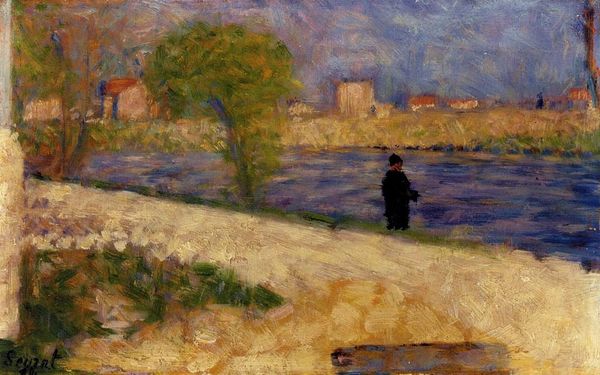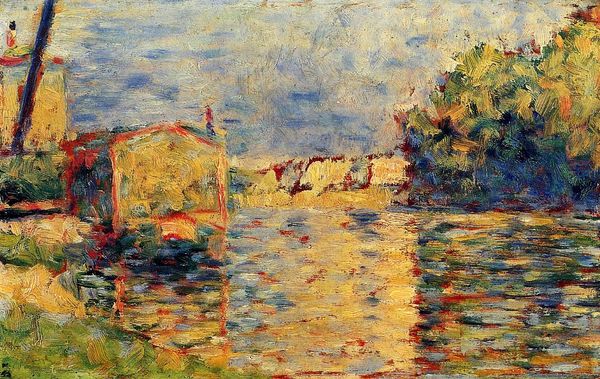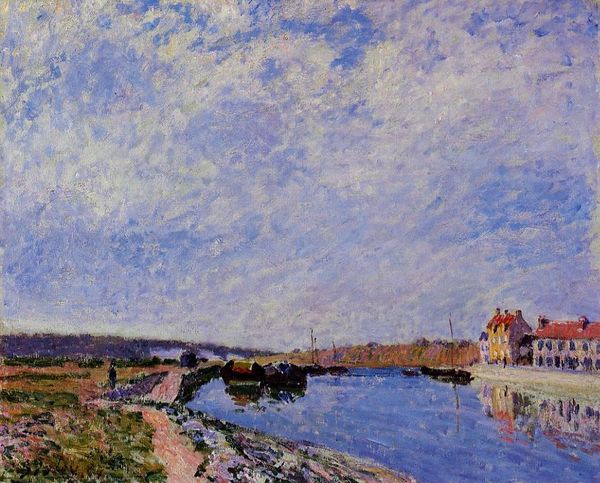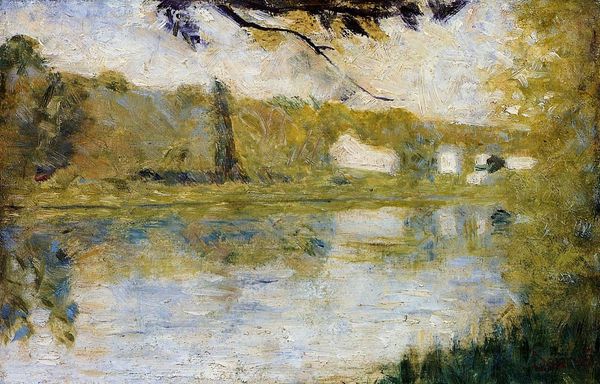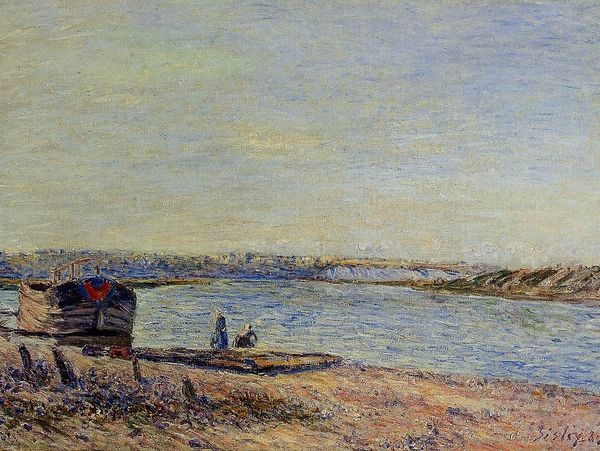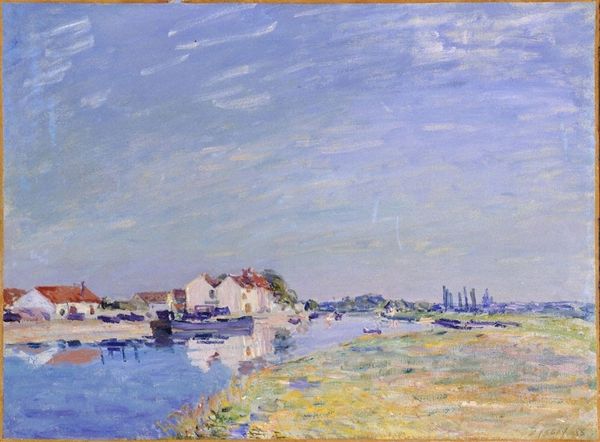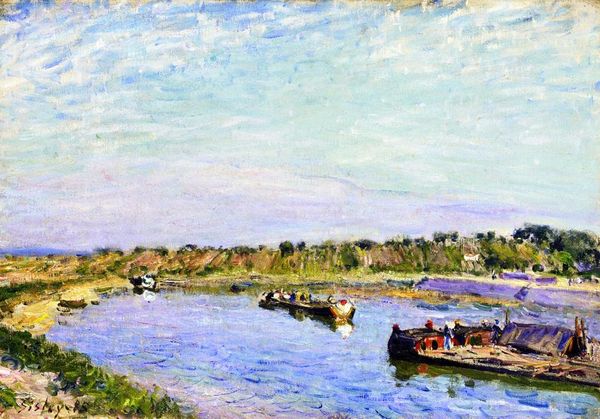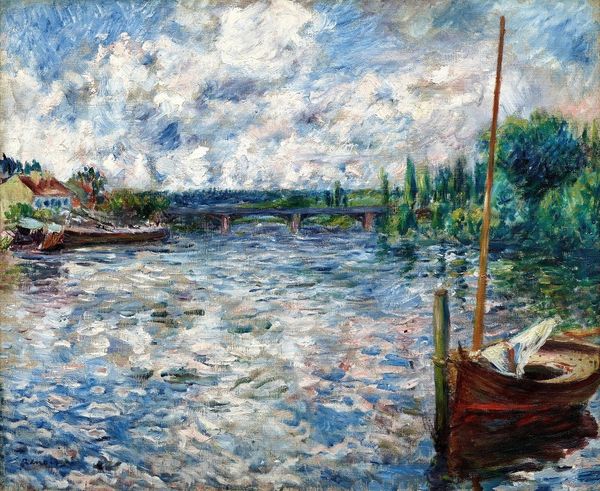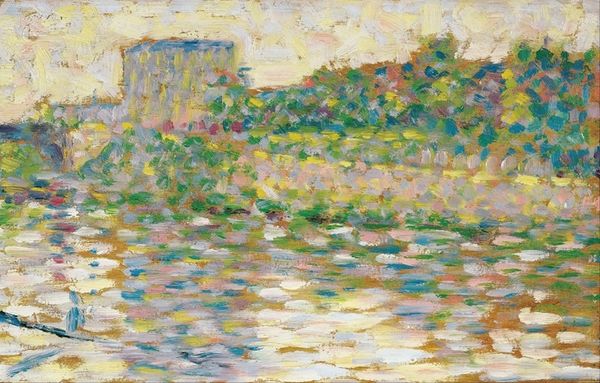
plein-air, oil-paint
#
impressionism
#
plein-air
#
oil-paint
#
landscape
#
impressionist landscape
#
oil painting
#
post-impressionism
Dimensions: 16.2 x 24.8 cm
Copyright: Public domain
Editor: We're looking at "Clothes on the Grass," an 1883 oil painting by Georges Seurat, currently at the Tate Modern. There's a striking contrast between the impressionistic rendering of the water and the clearly discarded pile of fabric in the foreground. What can you tell me about this piece? Curator: It's fascinating how Seurat uses paint itself to mediate between landscape and labor. Look at those strokes. They aren’t just representing light; they're remnants of a repetitive action, applying paint, much like the repetitive labor implied by those discarded clothes. The materiality of the paint mirrors the materiality of the fabric. Do you see the industrial structures in the background? Editor: Yes, those buildings contrast starkly with the natural landscape, almost like a challenge. Curator: Precisely. And note how the clothes sit between the viewer and that scene. What might their abandonment suggest about leisure, or perhaps, alienation from industrial labor? The "plein-air" method usually celebrates nature, but Seurat introduces manufactured materials. Editor: So, the painting isn't just a pleasant scene, but a commentary on the social changes of the time. It feels very grounded. Curator: Indeed. It uses material representation to provoke questions about production, consumption, and the changing relationship between humans and their environment. What have you gathered overall from this discussion? Editor: That an Impressionist painting can be much more than a fleeting moment; it can be deeply rooted in the materials and societal structures of its time. Curator: Absolutely, considering Seurat's innovative process and materiality encourages a broader understanding of Impressionism.
Comments
No comments
Be the first to comment and join the conversation on the ultimate creative platform.

